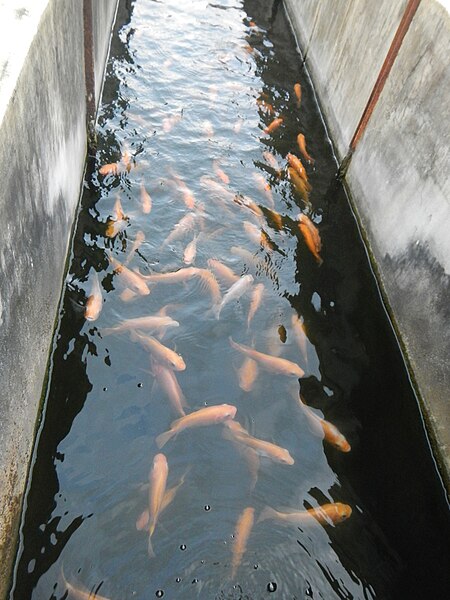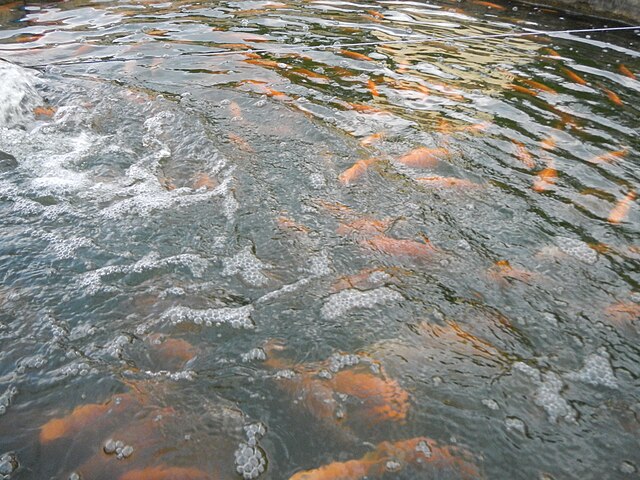Tilapia has become the third most important fish in aquaculture after carp and salmon; worldwide production exceeded 1.5 million metric tons in 2002 and increases annually. Because of their high protein content, large size, rapid growth, and palatability, a number of coptodonine and oreochromine cichlids—specifically, various species of Coptodon, Oreochromis, and Sarotherodon—are the focus of major aquaculture efforts.
National Tilapia Research and Development Program (NTRDP) – Red Nile Tilapia Aquaculture of tilapia Nile tilapia Oreochromis niloticus
Red nile tilapia under the experiment (CLSU, Philippines.)
Red nile tilapia for breeding
The fingerlings in breeding tubes
Tilapia is the common name for nearly a hundred species of cichlid fish from the coelotilapine, coptodonine, heterotilapine, oreochromine, pelmatolapiine, and tilapiine tribes, with the economically most important species placed in the Coptodonini and Oreochromini. Tilapia are mainly freshwater fish inhabiting shallow streams, ponds, rivers, and lakes, and less commonly found living in brackish water. Historically, they have been of major importance in artisanal fishing in Africa, and they are of increasing importance in aquaculture and aquaponics. Tilapia can become a problematic invasive species in new warm-water habitats such as Australia, whether deliberately or accidentally introduced, but generally not in temperate climates due to their inability to survive in cold water.
Nile tilapia, Oreochromis niloticus
The Tomb of Nakht, from 1500 BC, contains a tilapia hieroglyph just above and to the right of the head of the central tall figure.
Nile tilapia (Oreochromis niloticus)
People fishing for tilapia Lake Naivasha, Kenya








